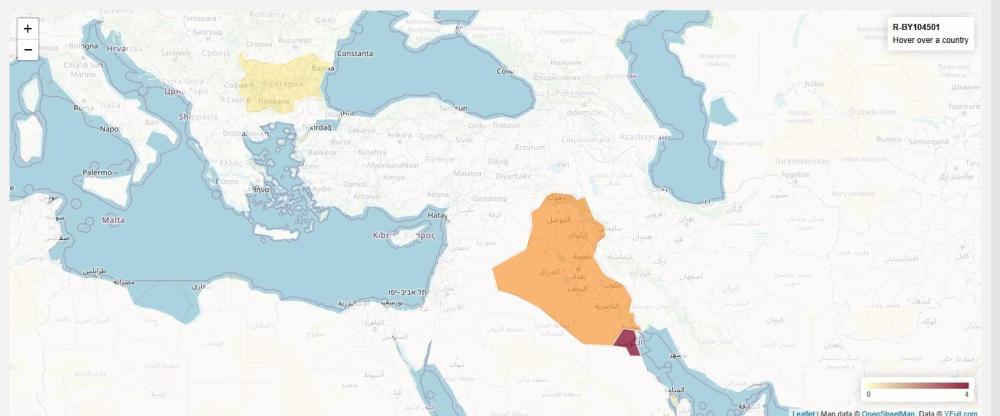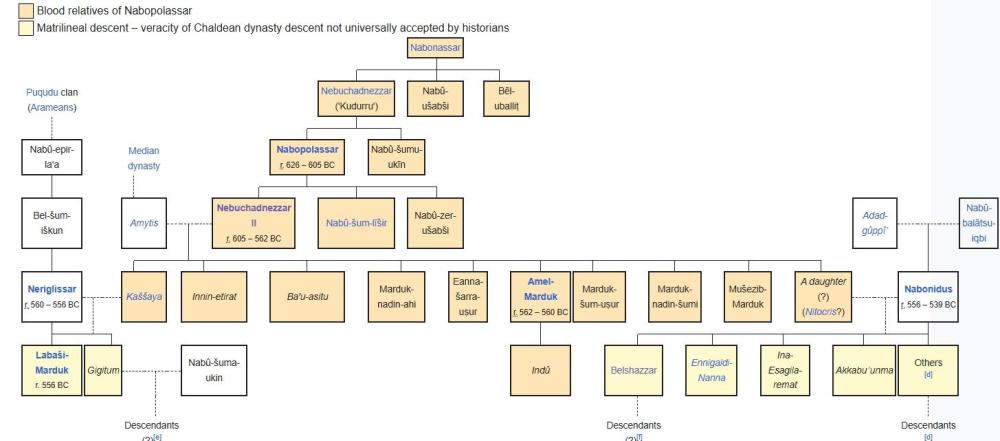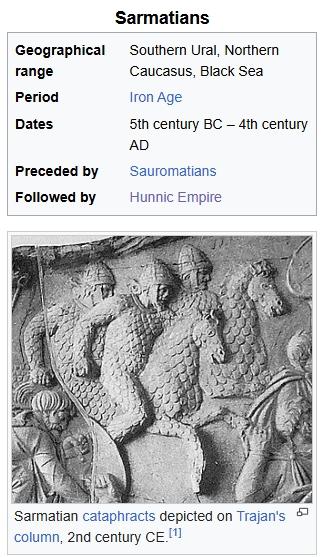
Tomata
Потребител-
Брой отговори
1126 -
Регистрация
-
Последен вход
-
Days Won
1
Tomata last won the day on Август 21 2023
Tomata има най-харесвано съдържание!
Всичко за Tomata

Последни посетители
The recent visitors block is disabled and is not being shown to other users.
Tomata's Achievements
-
Пак не разбирам въпроса Ви. Нали сам сте писал, че свидетелството е от 16в.? Това е доста късно за да си вадим някакви кардинални изводи. Боляри по смисъл съответства на велможа, царедворец, дворянин, те благородник, аристократ . Тези думи без боляр и аристократ със сигурност са със славянски произход. Пс. това не е непременно титла, по-скоро е социален статус, като напр.„-Ваша милост“ . Речник,-4. милост (за високопоставено лице): ; милост. Honour ; милост. Grace ; милост. Ladyship ; Ваша милост. Your Honour. За произхода на думата боляр не съм сигурен, но факт е, че я има в много по-стар документ на ист. ирански език. При това е с отлична семантика . bulj- ‘honour, praise’ Bojary се споменава за първи път на 5 декември 1581 г. Тогавашният собственик на имението Бялисток, Piotr Wiesiołowski, споменава селото под името Miłosze. Последният пример е само като куриоз..
-
Напротив, аз се доверявам на по-начетените от мен и ти дадох цитат минал през рецензия, а ти повтаряш същото каквото съм писал и твърдиш, че моето е грешно. „Ето го текста на гръцки от Приск (за един час се намира) и аз такова нещо там не виждам. Има едно име: Κουγχας/Κουγχαν (Коугхас/Коугхан).“,- Ето това са твоите думи, но без да знаеш гръцки реши да оспориш, не моето мнение, а това на преводача и експертите които ползват неговата компетенция. Ако беше си направил проста проверка нямаше да говорим сага врели не кипели разни. На твоето са му дали и име,- „метода на коулбоя“- стреляш безразборно в стената и после рисуваш мишената върху дупките. Κουγχας/Κουγχαν -->Kunghas/Kughan
-
Няма нищо за разгадаване Аваро-кидарити го разбирам аз. Пс. още за цитираният от Табари народ sul, šahrestan [ī] kūmīs [ī] panj-burg až-i dahāg pad šabestān kard. māniš [ī] *pārsīgān ānōh būd. padxwadayīh [ī] yazdgird ī šabuhrān kard andar tāzišn ī čōl wērōy-pahr [ī] an ālag. (The city of Kūmīs of five towers Aži Dahag made it his own harem. The abode of the Parthians was there. In the reign of Yazdgird, the son of Šabuhr made it during the invasion of the Čōl, at the boundary of the Georgian Guard.). -Wėrōy-pahr: "The Georgian Guard" The old name of the fortress at Darband;. ( ред.-*It is the Greek Tzour (Procopius, Hist, vm, iii, 4) from Armenian tsur, “door” ( = Chor) ..акадцири?, заради топонима дербент, но това обаче лесно се опровергава --> Hisar means 'fort, castle' in Arabic. The word was adopted in Persian and Ottoman Turkish. East: ܗܲܨܵܪ(' ha ṣa:r) 1) 1) a tower , a fortress , a permanent place fortified for defense or security , a fortified place , a bastion (?) ; 2) an earthwork ; 3) a common name for a walled village especially if built on a hill ; 4) Salamas : a walled field (...) ; East: ܒܘܼܪܓ̰ܵܐ(' bur dja) Definition: 1) a tower , a fortress , see Classical Syriaque : ܒܘܼܪܓܵ <> 2) Urmiah : chess game : the tower , виж горе Balanjar,- burdjan Има едно обяснение, акадцирите са хазари кръстени на топоним, хората от крепоста, градските хора, а каква националност носят е отделен въпрос.
-
Priscus mentions that the Persians in 465 held the fortress of Yuroeipakh (P),80 apparently at the east end of the Caucasus, against the Kidarites and wanted the Romans to contribute to its upkeep. Elsewhere he says that when the Saragurs in 468 marched against the Persians, they met at the Caspian Gates (Darband) the Persian garrison which formerly had held the pass against the Kidarites.81 A little later, in 472, a Persian embassy to Constantinople announced a victory over the Kidarites and the capture of the town of “Balaam,” which may have to be looked for north of the Caucasus. The name as it stands is surely due to a copyist.82 From all this the question suggests itself, Are the Kidarites in the 5th century simply the IGiazars? The view which connects the Kidarites with the Hephthalites does not exclude this, for it appears that there may be affinity between Hephthalites and Khazars. The institution of polyandry is said to be characteristic of the Khazars, or at least attested among them, as well as among the Hephthalites. But unless the text of Priscus is seriously defective, the Kidarites are perfectly distinct from the Akatzirs (Akattirs, Akatirs), of whom he also speaks. If the Kidarites are the Khazars, the Akatzirs apparently are not.
-
According to Tabari,76 the Persian Firuz (45*7-484) erected a work of stone in the neighborhood of §ul77 and the Alans, to protect his country from the northern nations. According to the Greek author Priscus, Peirozes (Firuz) some time before a.d. 465 sent to Kounkhas (? Qun Khan), king of the Kidarite Huns, saying that he wished for peace and an alliance and would give the Kidarite his sister in marriage. Kounkhas agreed, but there was sent to him. from Persia, instead of the sister of Firuz, another woman got up to impersonate her. Това Kounkhas доста напомня Kuningaz
-
Ето тук един интересен анализ. The Persian king conquered Bab al- Abwab, Tabarsaran and Balanjar. He built the town of Qaliqala and many others, and colonized them with Persians. Then the Khazars reconquered what the Persians had taken from them, and it remained in their hands for a time, till the Romans defeated them and appointed a king over the Fourth Armenia. The first part of this notice apparently refers to the time of Qubad. We seem to be told that the Khazar Khaqan’s deputy, i.e., presumably the Beg, until defeated by the Persians, was in control of part of Armenia. At first sight, there is no reason to doubt the historic character of the notice, supported as it is by Baladhuri and ibn-Khurdadhbih. As to the title or personal name of the deputy, it should certainly be Turkish, like the rest of the Khazar nomenclature known to us. (Houtsma’s restoration of the first part as Yazid is not at all satisfactory.) The second part of the notice refers to the situation on the Khazar frontier at a later period, shortly before the coming of the Arabs. On this showing, the notice would give the first certain appearance of the Khazars, raiding or migrating en masse south of the Caucasus, as we meet them later on various occasions. The date would be not later than 531 (death of Qubad). Moreover, the notice would give the existence of the Khazar Khaqanate, and even the double kingship, at this time. This is very difficult. It is not simply that the Khazar Khaqan and his representative are not named distinctly in the existing sources till much later. The existence of a Khaqan among theTurkish people is usually understood to mean their sovereignty and independence. When next the Khazars appear, it is as part of the West Turk confederation, marching under West Turk leadership. In addition, if the notice in Ya'qubi is to be taken at its face value, the Khazars, complete with Khaqan and deputy, make their appearance while as yet there is no such thing as a West Turk empire, before even the original Turkish federation had come into being (a.d. 552). While the Khazars may have existed in the west before this time, it seems practically certain that their emergence as a power was connected with the decline of the West Turks. The rule of the West Turk Kagans (Khaqans) lasted till a.d. 657 or 659, when they were crushed by the Chinese.” It is from this point onward that one would expect to find a Khaqanate among the Khazars. Later investigation may confirm the surprising statements of Ya'qubi. Meanwhile, an explanation of them may be suggested along the lines of what we already know. The context of Ya'qubi’s notice is a genealogy of the northern peoples, of which the source is not stated,88 but which links up with genealogies given by Hisham al-Kalbi. It is reasonable to suppose that the latter is Ya'qubi’s authority, especially as elsewhere Hisham al-Kalbi mentions the Khaqan of the Khazars. This gives us a much more credible order of dating for the existence of the Khazar double kingship. Al-Kalbi’s principal authority was his father, who died in 146/763. He himself survived till 204/819.8* A date three centuries before this is almost certainly much too early. On the other hand, it is hardly by chance that the Khazars begin to be mentioned in the reigns of Qubad and Anushirwan (531-579). The growing number of increasingly precise indications seems to prove that they are indeed upon the scene. Tabari tells us that Anushirwan divided his empire into four great provinces or satrapies, one of which was Adhar-bayjan and its neighborhood, “the country of the Khazars.” He was engaged with “a nation called Sul," surely inhabitants of the eastern extremity of the Caucasus, in the neighborhood of the “pass of §ul” (Darband). He defeated the B-n-j-r, Balanjar and another people who may be the Khazars (if so, as yet distinct from the others), when they raided Armenia, and settled 10,000 of the survivors in Adharbayjan. He built Bab al-Abwab, to call the place by its later Arabic name, a fortress and city whose purpose was to stem the tide of northern invasion—a purpose which on the whole it served well in succeeding centuries.
-
Този хакан Йосиф е дал някаква странна транскрипция за уж ванандци, ама други хипотези смятат че говори за уногондури, защото не са му били съвременници и той не е пропуснал да се похвали как ги е победил и колко много са били. Не става ясно дали са българи обаче. Може да е прогонил всякакви славянски племена дето налазват балканите малко преди българите да минат дунава. Не бяха ли българите един файтон хора, „разтворил се“ в славянското море? Тука никаква генетика и археология не помага, защото тези народи непрекъснато се движат и умесват
-
Мяташ се като риба от тема в тема, а дори нямаш ясна теза освен тази- „ отдавна ги знаем ги Ний тез работи, охооо,“ Ако си попрочел нещичко за Вавилон и Аккад няма как да твърдиш друго, освен че официалният език е бил семитски. Последните владетели са халдеите, които в твоя цитат по горе грузинците опраделят като хуни, а гръцки извори като българи. Защо реши че са семити, като дори в библията пише, че са пришълци от кюрдските планини. При Херодот киммериците които като вихрушка отнасят старите царства и накрая се смесват с асирийците. Основната маса на днешните израелци, ешкеназитата, наследници на хазарите, имат ли специфични семитски гени? Гени на български царски род имаш ли секвенирани? Латинският хронограф къде и как се вписва в изложението ти, вулгарите българи ли са или не? Та и двамата с Макето не искате или не можете да схванете, че въпросните българи са скитници в пространство-времето , а Аккад е само спирка за отдих и част от приключението. „Божият отговор 5 Погледнете между народите, вникнете и се учудете много; защото Аз ще извърша едно дело в нашите дни, което няма да повярвате, ако и да ви бъде разказано. 6 Защото Аз повдигам халдейците, този лют и нетърпелив народ, който минава през широчината на света, за да завладее селища, които не са негови. 7 Страшни и ужасни са те; съдът и властта им произлизат от самите тях. 8 Конете им са по-бързи от леопарди и по-свирепи от вечерни вълци; конниците им скачат отпуснато. Да! Конниците им идват отдалеч, летят като орел, който бърза да разкъсва. 9 Всички идат за насилие; лицата им са насочени напред и събират пленници като пясък. 10 Те се присмиват на царете и първенците са за тях подигравка; присмиват се на всяка крепост, защото, като издигат грамади от пръст, я превземат. 11 Тогава духът му се изменя; преминава като завоевател и върши нечестие, като прави силата си свой бог.“ Пс. Не разбирам нищо от новото вундервафе генетиката, но като редови ползвател на интернет вече съм поствал сравнителни диаграми на съвременни асирийци и българи и те да ти кажа доста си приличат. Ето ти и един специфичен ген
-
šarru [LUGAL : ] (n. ; st. constr. šar, šarri ; pl. šarrū, šarrānū) a king , a monarch mātu: [KUR : ] 1) (own) home country , home territory , the land / the state ; 2) flat country as opposed to mountains ; 3) land as opposed to sea ; 4) (foreign) country / territory , inhabitants of a country , a people , a nation ; Това е от аккадски. Цитирам го, защото според мен би могло да е алтернативен прочит на текстовете отдолу. Халдеи (халдейци) С това название се обозначава: 1) халдейският народ и халдейските поданици въобще; 2) философи, естествоизпитатели, гледачи, и други, които се занимавали с изучаване на математика и астрономия, чрез което те се опитвали да предсказват бъдещи събития и съдбата на хора, родени под определени съзвездия. Халдеите, са били отначало едно войнствено племе, което населявало Кюрдските планини на север от Асирия и Месопотамия – Ер. 50:17. Когато асирийските монарси, разширили завоеванията си на север и запад, тогава халдеите паднали под тяхната власт, но под властта на своите победители, те се преобразили, от една груба орда в един образован народ. Едно живописно и впечатлително описание за халдейските войници, срещаме в книгата на пророк Авакум, който може би е живял около времето, когато халдейците нападнали Палестина и околните ѝ земи – Ав. 1:6-11. За времето, в което халдейците са преминали във Вавилония, нищо не се знае. В царуването на цар Езекия, (713г. преди Христа), се споменава един Вавилонски цар, първия, за когото четем след Нимрод и Амарфал. Сто години по-късно намираме халдейците като владетели на Вавилонското царство. Като пръв цар от новата Вавилонска династия в историята се явява Навополасар. Неговият син Навуходоносор нападнал Палестина, според предреченото от Еремия и Авакум – Езд. 5:12; Ер. 39:5. Навуходоносор, бил наследен от синът си Евилмеродах – 4Цар. 25:27 и Ер. 52:31. След него последвали в кратко време Нериглисар, Лаворосоарход, и Навонид (или Валтасар), при когото тази империя била погълната от Мидо-Персийската империя. Халдео-Вавилонската династия не е удържала повече от сто години. Theophylact also tells us that about the time of the Turkish embassy in 598 there was another emigration of fugitives from Asia into Europe, involving the tribes of the Tamiakh, Kotza- gers, and Zabender. These were, like the previous arrivals, descendants of Var and Hunni, and they proved their kinship by joining the so-called Avars, really Uigurs, under the Khaqan of the latter. It is difficult not to see in this another version of the story given by Michael Syrus and Bar Hebraeus. The Kotzagers are undoubtedly a Bulgar group,14 while Zabender should be the same name as Samandar, an important Khazar town, and hence correspond to Kazarig in the Syriac. Originally, it seems, Samandar derived its name from the occupying tribe.19 We appear to have confirmation that the Khazars had arrived in eastern Europe by the reign of Maurice, having previously been in contact with the West Turks and destined to be so again. On the other hand, the older view implied that the Khazars were already on the outskirts of Europe before the rise of the Turks (circa a.d. 550). According to this view, the affinities of the Khazars were with the Huns. When Priscus, the envoy to Attila in 448, spoke of a people subject to the Huns and living in “Scythia towards the Pontus” called Akatzir,18 these were simply Aq-Khazars, i.e., White Khazars. Jordanes, writing circa 552, mentions the Akatzirs as a warlike nation, who do not practice agriculture but live by pasturing flocks and hunting.11 In view of the distinction among some Turkish peoples between the leading clans of a confederacy as “white” and the remainder as “black,” when we read in the Arab geographer Istakhri that the Khazars are of two kinds, one called Qara-Khazars (Black Khazars), the other a white kind, unnamed,18 it is a natural assumption that the latter are the Aq-Khazars (White Khazars). The identification of the Akatzirs with “Aq-Khazars” was rejected by Zeuss1’ and Marquart20 as impossible linguistically. Marquart further said that historically the Akatzirs as a subject race correspond rather to the Black Khazars. The alternative identification proposed is Akatzirs ==Agacheri. But this may not be very different from the other, if Zeki Validi is right in thinking that the relation between the Agacheri and the Khazars was close.*1







.jpeg.681895d865fa7d89f4c9160d2a52279c.jpeg)

